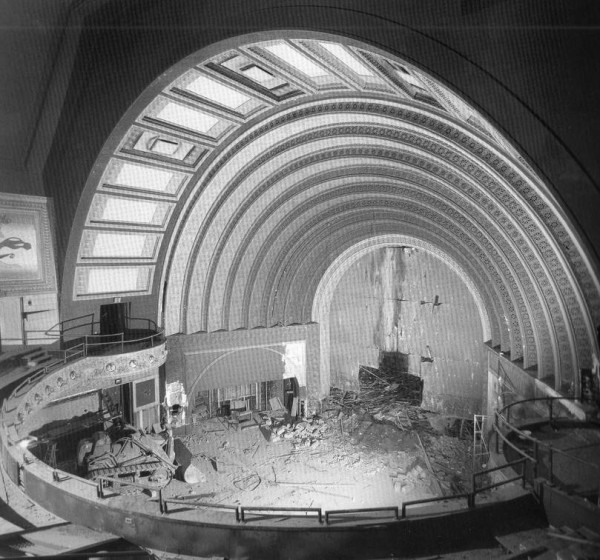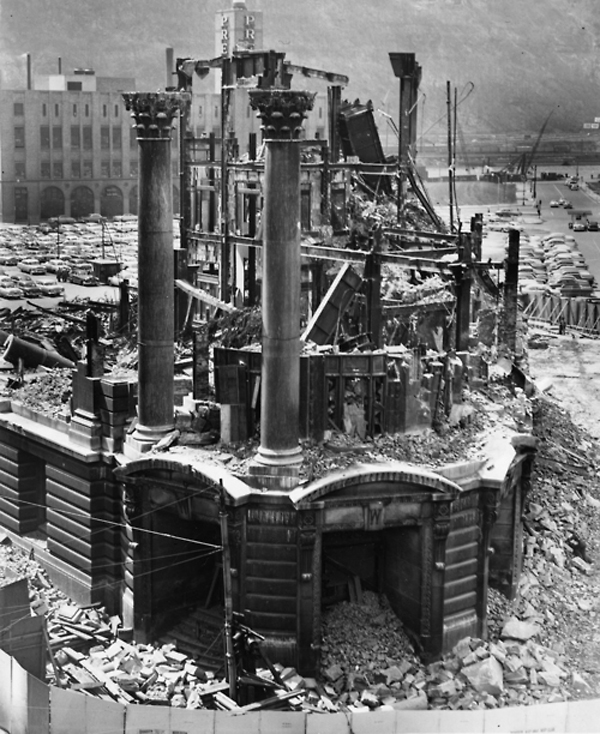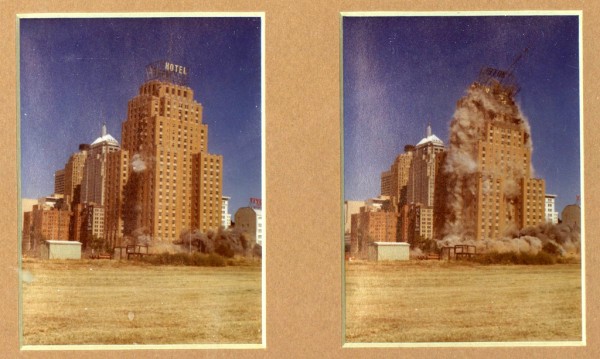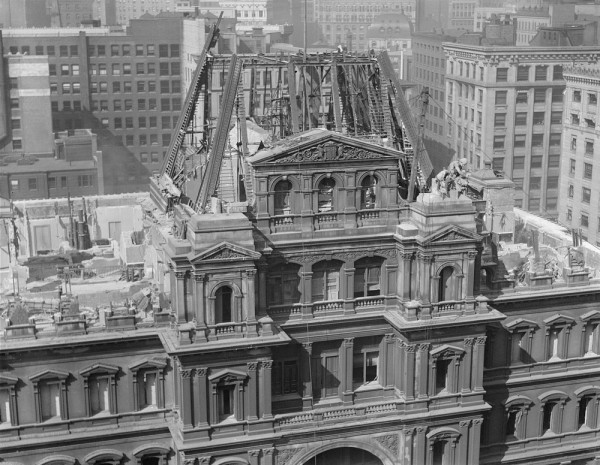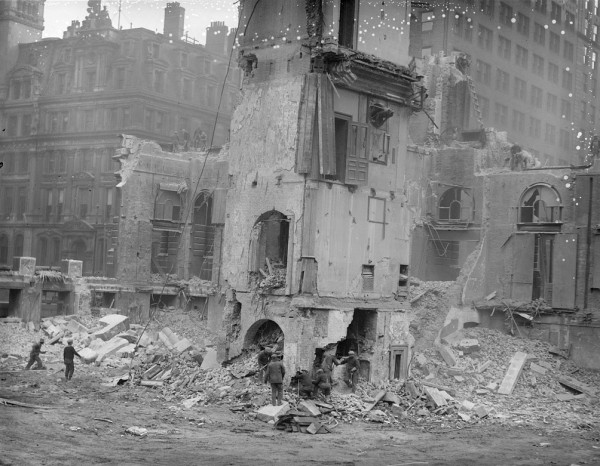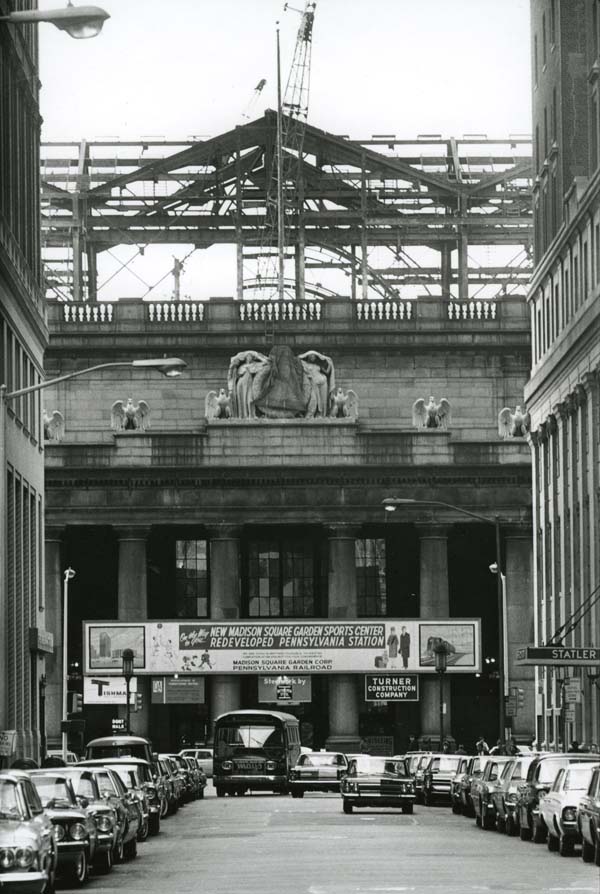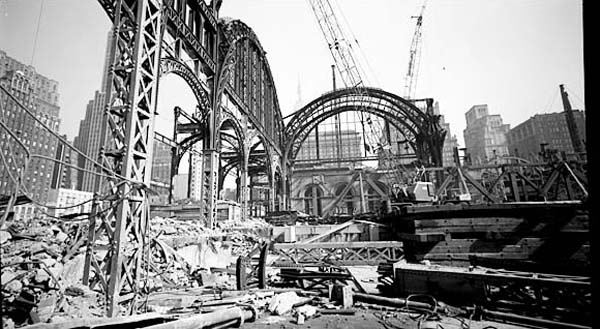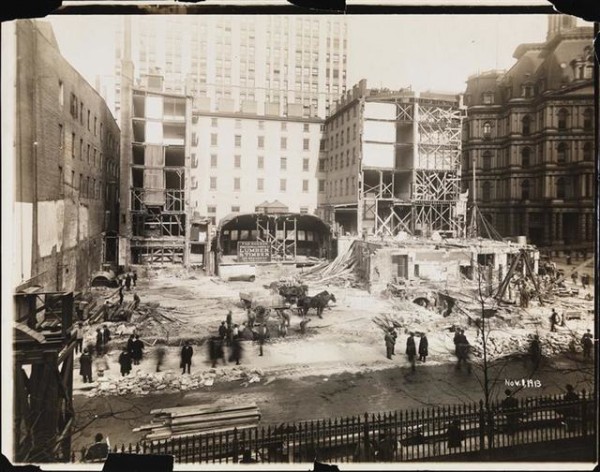Photographs of Beautiful Buildings Being Demolished
Seven stories of beautiful buildings being demolished.
Legendary architectural historian and photographer, Richard Nickel, once famously said that "great architecture has only two natural enemies: water and stupid men".
Private developers, whom are often viewed as the modern equivalent to the Biblical tax collector, seem to sit fairly squarely in this latter category. Derided and debased by society, private developers are seen as men who value profitability above productivity, men who look at an architectural treasure and only see it's potential for money-making and who with one foul swoop of a wrecking ball can reduce cultural icons into rubble and dust.
While this characterisation may not be entirely fair, these photographs commemorate the destruction wreaked by private developers. They provide a vision of beautiful buildings being demolished and the modern monstrosities that are often left in their wake.
Here are seven stories of stunning theatres transformed into multi-storey carparks, modernist masterpieces replaced with multi-lane highways, and sandstone sanctuaries turned into apartment blocks. Have a closer look at these fascinating photographs and the stories behind them to see how the price of "progress" often appears to be the destruction of a rich and beautiful architectural history.
Garrick Theatre - Chicago, Illinois
Formerly known as the Schiller Theatre Building, the Garrick Theatre was one of the tallest buildings in Chicago upon its completion in 1892. Despite quickly gaining a reputation for being one of the city's premiere cultural centres, housing everything from German operas to traveling theatre productions to television studios in its 68-year-history, the theatre was demolished in 1960 after a long battle with Chicago residents and preservationists. While Richard Nickel attempted to honour the theatre's legacy by hording and collecting hundreds of artifacts and ornaments that adorned the iconic building, the site now plays home to a car parking facility.
The Wabash Terminal - Pittsburgh, Pennsylvania
The demolition of the Wabash Terminal provides a snapshot into the incredible destruction that was Pittsburgh's post-WWII urban development project. 1,500 businesses were forced to relocate, more than 5,000 families were uprooted and more than 3,700 buildings were razed. The Wabash Terminal was one of the centrepieces of robber baron, Jay Gould's elaborate (and ultimately failed) plans to construct a transcontinental railroad empire at the turn of the 20th Century. Its demolition, beginning in late 1953, was a long and brutal process with workmen armed with crowbars and sledgehammers taking down the building brick by brick.
Biltmore Hotel - Oklahoma City, Oklahoma
These images, taken from a live video broadcast in 1977, played a significant role in sparking public outrage and subsequently bringing to an end the "Urban Renewal program" in post-war America. The 26-story, 300-room Biltmore Hotel was one of the largest buildings to be demolished in this nationwide program to eliminate urban slums. These startling images, for many Americans, brought into sharp focus what terms like "redevelopment" and "restruturing" actually meant: widespread and often indiscriminate destruction of major cities.
Before and after shots of the US Post Office - Boston, Massachusetts
The majestic US Post Office was located in the heart of Boston and was an architectural centrepiece of the city upon its opening in 1870. Only half a century later, the building fell victim to the wrecking ball with very little explanation given as to why this beautiful building was seen as requiring demolition.
Pennsylvania Station - New York, New York
On July 14, 1966 Pulitzer Prize-winning architectural critic, Ada Louise Huxtable wrote this "obituary" of New York's iconic Pennsylvania Station in the New York Times:
“Pennsylvania Station succumbed to progress this week at the age of 56, after a lingering decline. The building’s one remaining facade was shorn of eagles and ornament yesterday, preparatory to leveling the last wall. It went not with a bang, or a whimper, but to the rustle of real estate stock shares. The passing of Penn Station is more than the end of a landmark. It makes the priority of real estate values over preservation conclusively clear. It confirms the demise of an age of opulent elegance, of conspicuous, magnificent spaces, rich and enduring materials, the monumental civic gesture, and extravagant expenditure for esthetic ends.”
Pruitt-Igoe Public Housing Complex – St. Louis, Missouri
Depending on who you speak to, the demolition of this massive 33-building public housing complex designed by George Hellmuth and World Trade Center architect Minoru Yamasaki represents either the death knell of Modernist architecture or the rebirth of St Louis as a modern metropolis. Initially built to combat the problem of St Louis' ever-growing slums, the buildings experienced a rapid and dramatic deterioration upon its unveiling in 1956. By the late 1960s the overcrowded complex became a hotbed for gang violence and crime and Pruitt-Igoe, St Louis' shining example of the wonders of urban renewal, was a national embarrassment and a global symbol of American poverty, crime and racial tensions. When it was torn down in the mid-1970s, St Louis may have been able to say goodbye to an embarrassing icon, this was little consolation for the thousands of poor and disadvantaged Americans who woke up one morning to find they were now homeless.
Astor House - New York, New York
Through much of the 1800s Astor House was considered to be America's most luxurious 5-star hotel, with the likes of Henry Wadsworth Longfellow and Abraham Lincoln (on his way to his inauguration no-less) frequenting the iconic Broadway hotel. By the early 20th Century however Astor House gained a reputation as an "old-fashioned" establishment and in 1913 the building began its long drawn-out demolition, with subway constructions and a transportation building eventually replacing the decadent hotel.


